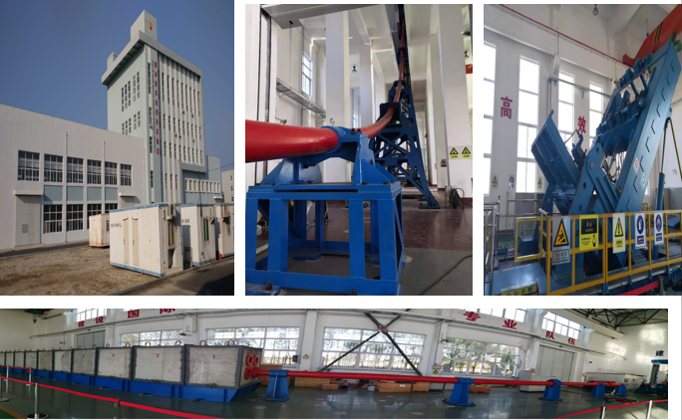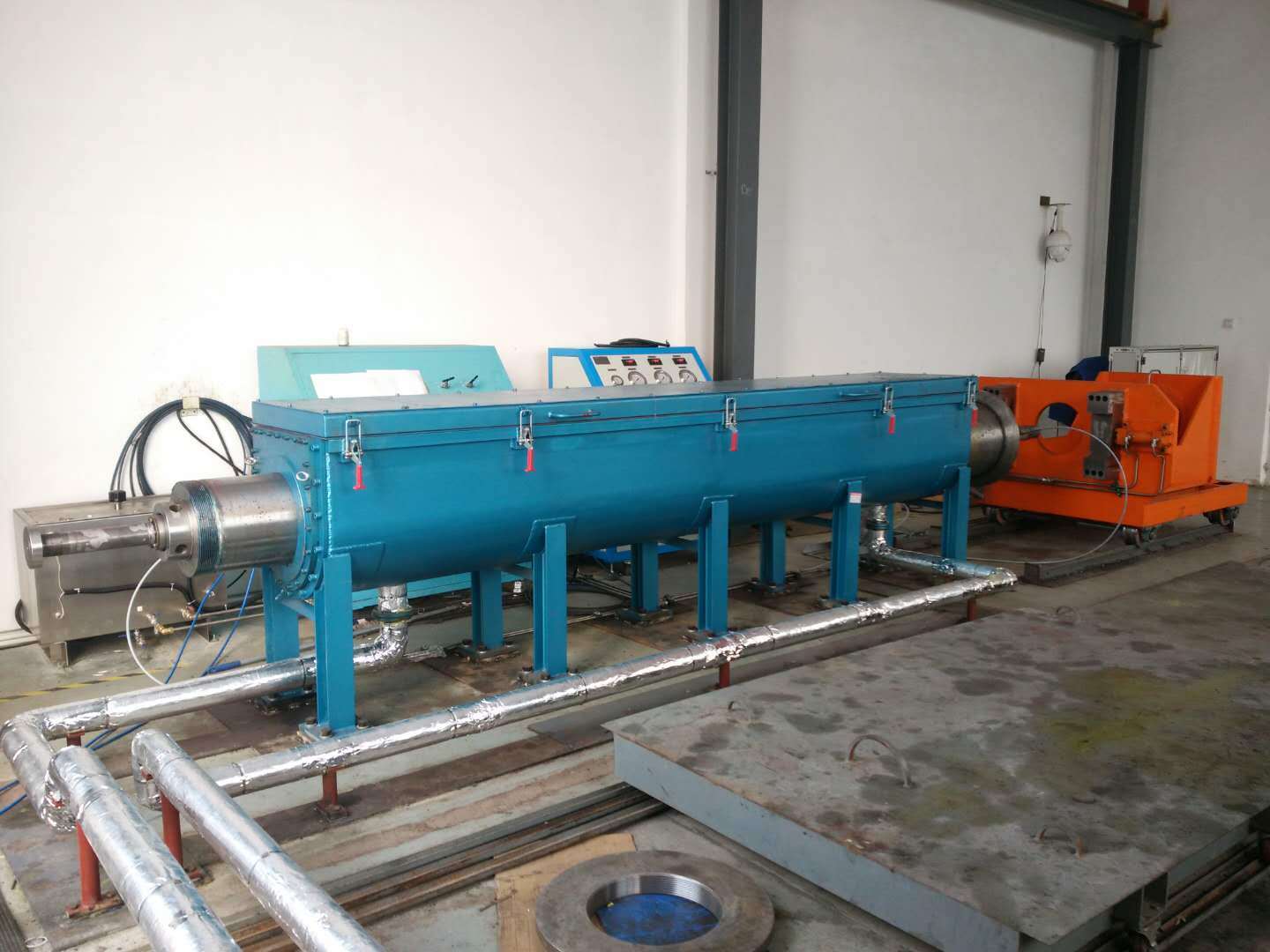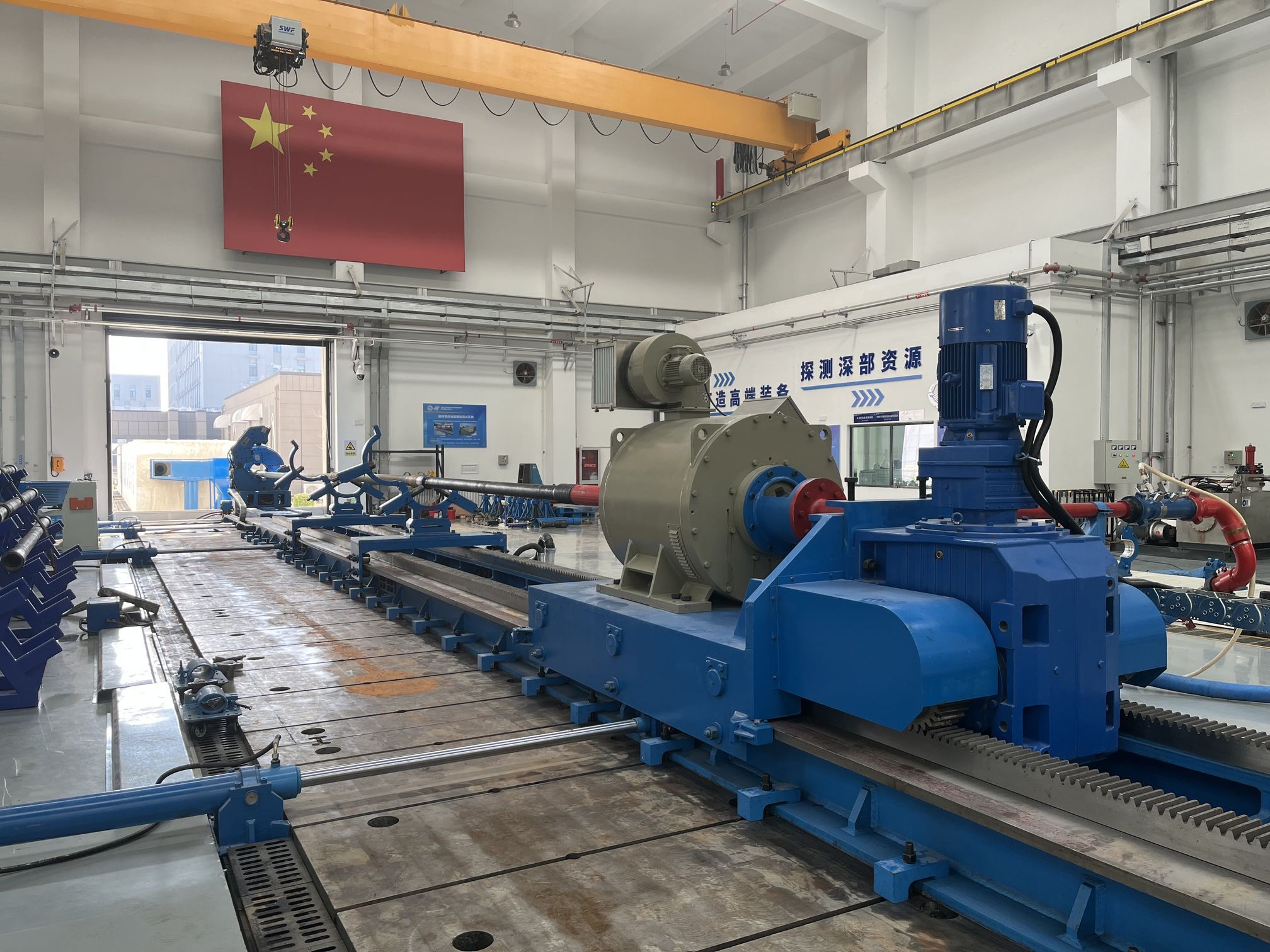

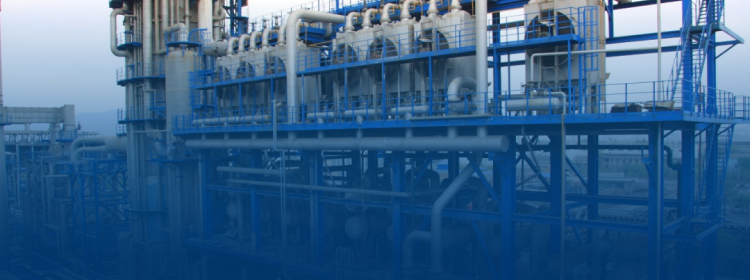
LANPEC has engaged in the oil & gas drilling/production equipment and downhole tools industry for decades, developing nearly 50 laboratory test systems ranging from bench-scale to full-size. These facilities simulate downhole drilling conditions to provide reliable validation for downhole tools and drilling equipment R&D, demonstrating extensive engineering expertise.
Over the past decade, we have delivered integrated solutions to:
National Oil Companies: CNPC, Sinopec, CNOOC
Research Entities: Geological survey institutes, petroleum universities
Specialized Sectors: Defense, aerospace, and energy technology
Comprehensive Service Portfolio:
▸ Turnkey laboratory engineering
▸ Technical consulting & custom engineering
▸ Non-standard test system construction
▸ Legacy lab maintenance & retrofits
▸ After-sales support & operator training
▸ Oilfield laboratory commissioning
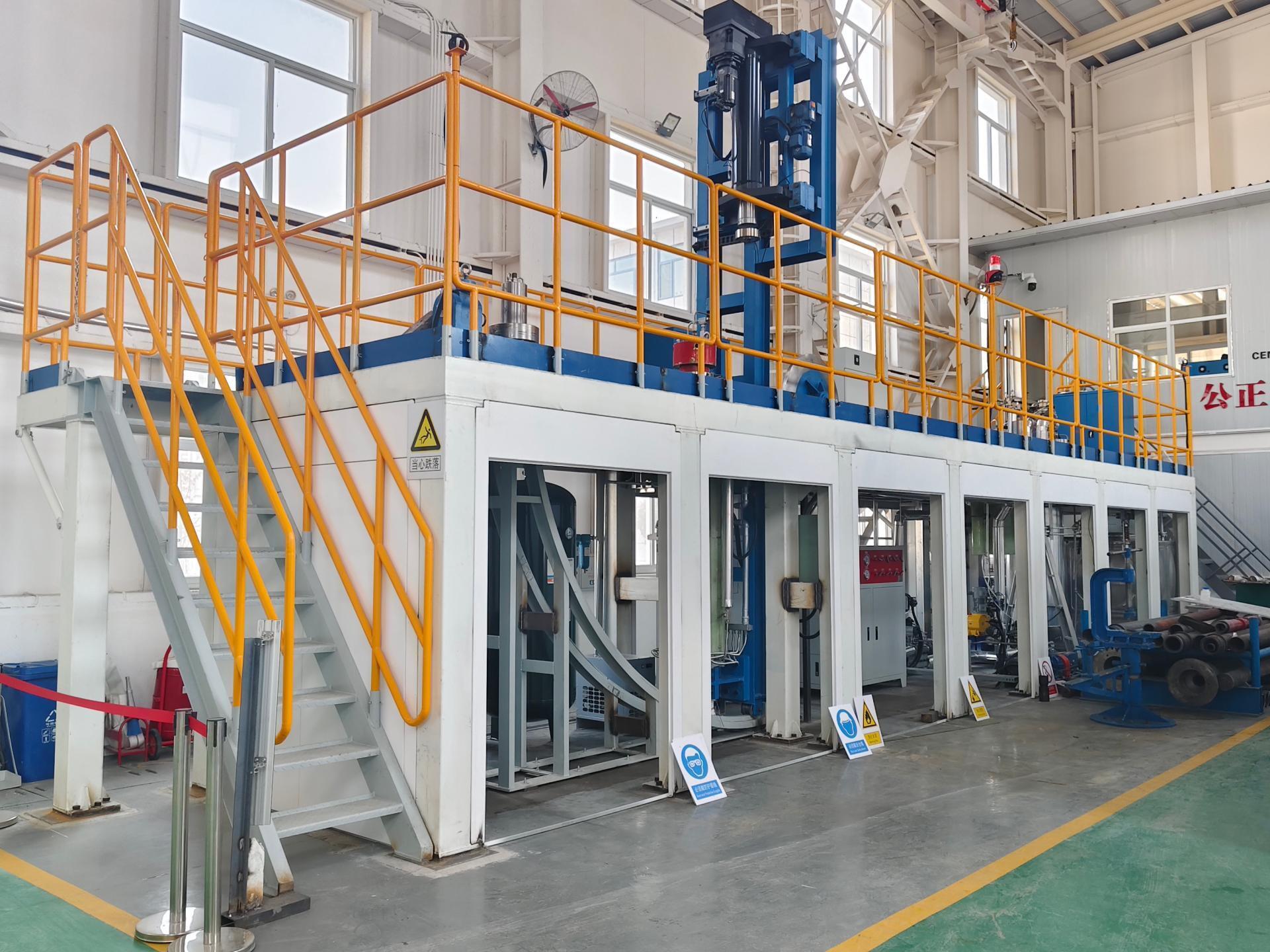
Main Product Parameters
Functions and features:
1、 Multi-functional testing machine is mainly used for pulling, pressing, twisting and cyclic testing with pressure on downhole tools, adopting hydraulic servo control, accurately applying drilling pressure;
2, can real-time display of the relevant pressure, tension, torque, speed, displacement, etc.; supporting robots, screwing pliers to realize the full automation of the operation;
3, with automatic report generation and printing function, can be automatically uploaded to the data storage server;
4, with steel wire and cable salvage operations;
5, can be customized according to user requirements.
Main technical parameters:
1、Maximum torque of 30,000N.m, maximum speed of 400r/min;
2、Maximum tensile force 150 tons, pressure 150 tons;
3、Maximum cycle pressure 60MPa;
4、Maximum stroke 5m;
5、Maximum load of robot: 400kg.
Function and characteristics:
The downhole tools need to be verified and tested before entering the well. The 10,000-meter well circulation simulation system is a complete system that uses oil casing to establish a test well on the surface, simulating the real drilling fluid circulation of 10,000 meters. The function and performance of logging instruments and tools are verified. The 10,000-meter water circulation system is mainly composed of mud pump, fluid supply line, support, measurement and control system, etc. It can verify the function and performance of logging instruments and tools.
Technical parameters:
1、Maximum 10,000 meters of circulating pipeline process;
2、Maximum displacement of drilling fluid is 100L/s;
3、Maximum pressure of circulating pipeline is 52MPa.
Participated in projects: CNOOC Oil Service Drilling Laboratory Test Process System, PetroChina Great Wall Drilling Institute Pointing Rotary Guide Drilling System Test Supporting System, CNOOC Vantage Water Circulation System and so on.
Translated with DeepL.com (free version)
Function and Characteristics:
The rotary guided drilling simulation system is a complete set of system established on the ground to simulate the real drilling well, to verify the function and performance of logging instruments and rotary guided tools, which mainly includes rotary drilling system (multi-functional testing machine, small hydraulic drilling rig), simulated wellbore system, stratigraphic simulation system, circulating system, mud purification system, drilling column system and rotary guided tools. etc.
Technical parameters:
1、Maximum torque 20000N.m, maximum speed 400r/min;
2、Maximum circulation flow 100L/s;
3、Maximum circulating pipeline pressure 35MPa;
4、The length of cement target is 30m;
Functions and features:
Adopting oil casing to simulate well depth and electromagnetic induction heating technology, the high-temperature and high-pressure wellbore is set up on the ground to simulate the real drilling high-temperature and high-pressure working conditions and verify the reliability of downhole tools.
Main technical parameters:
1、 Maximum test temperature 400℃;
2、 Maximum test working pressure 300MPa;
3, test medium: nitrogen, water, heat conduction oil
Functions and features:
With horizontal drilling test function, it can carry out drilling cement target, casing opening window, rotary guide tool test, etc. Main technical parameters:
1、 Maximum tensile load and compression load is 30t;
2、 Maximum test rated torque load of 12620N-m;
3、 Maximum rotational speed 400r/min;
4、 Maximum stroke is infinitely adjustable.
Functions and features:
This single-phase flow calibration system, including supporting data acquisition and processing system. It can realize the pressure, flow rate and temperature calibration test of tools containing ultrasonic flowmeter, electromagnetic flowmeter, differential pressure flowmeter and other different flowmeters, such as concentricity measuring and adjusting instrument, eccentricity measuring and adjusting instrument, intelligent water dispenser, etc., and realize the calibration of flowmeter coefficients and its error analysis; the system is equipped with its own fault detection and diagnosis and alarm, i.e., self-test and self-diagnostic function. Calibration records and calibration results can be printed out after calibration is completed.
Main technical parameters:
1) Test medium: clean water;
2) Flow rate calibration range: 12~2880m³/d (0.0083 m³/min~2m³/min) (0.14 L/S~33.4L/S);
3) Flow control accuracy requirements: 0.2% (weighing method) and 0.5% (standard meter method);
4) System pressure level: 14MPa;
5) Working temperature: room temperature;
6) Working mode: full-automatic & semi-automatic;
Functions and features:
Meet the V0 grade test test of packer;
Main technical parameters:
1) Tensile force: 200 tons;
2) Pressure: 200 tons;
3) Torque: 20KN.m (with low-torque fast-forward and fast-backward functions).
4) Push-pull piston cylinder stroke: 1.5 meters;
5) Air pressure: working pressure 150MPa;
6) Oil pressure: working pressure 150MPa;
7) Temperature range: -30℃-400℃.
Functions and Features:
Built according to API 14A V1-H standard, it can test the function of downhole safety valves under the simultaneous presence of temperature, pressure and axial load. The test equipment can meet the rated working pressure of 210MPa, the temperature test range of room temperature to 250 ℃, the ground control of downhole safety valve function test requirements and can realize the API 14A Appendix B (confirmation test requirements), Appendix C (function test requirements), Appendix D (V2, V3 level function confirmation test requirements), Appendix G (V1, V1-H level function confirmation test requirements) and Appendix J, L (V1-H level function confirmation test requirements), and Appendix J, L (V1-H level function confirmation test requirements). ) and the test requirements specified in Appendices J and L (Functional Confirmation Test Requirements for Level V1-H). All of the above appendix test requirements are detailed in the API 14A-2015 standard. At the same time on the test equipment in the pressure, temperature, liquid, gas leakage detection and other aspects of the design of higher requirements, and the entire equipment integration of mechanical, hydraulic, fluid, electronic control, data acquisition and processing, remote monitoring and other systems, the degree of system integration is high.
Technical parameters:
(1) air pressure system: test medium: nitrogen;
Maximum working pressure of air pressure: 210 MPa, medium pressure 68MPa (10000psi), pressure sensor acquisition accuracy ± 0.25%;
(2) water pressure system: test medium: water;
Water pressure maximum working pressure: 210 MPa, medium pressure 68 MPa (10000psi), pressure sensor acquisition accuracy ± 0.25%;
(3) oil pressure system: test medium: hydraulic oil;
The maximum working pressure of oil pressure: 210MPa, medium pressure 68MPa (10000psi), pressure sensor acquisition accuracy ± 0.25
(4) heating system: the effective size of the system to meet the installation requirements of 2-3/8″ ~ 5-1/2″ safety valve;
Temperature range: room temperature ~ 250 ℃; control temperature ± 3 ℃;
(5) Axial loading system: axial load: 500 tons;
Maximum stroke of hydraulic cylinder: 0.5m
(6) gas flow test system: can realize API 14A-2015 standard appendix B in the B.3 gas flow detection.
Test medium: nitrogen;
(7) V3 grade water flow test system: capable of realizing B.10 V3 grade water flow test in Appendix B of API 14A-2015 standard.
Test medium: clear water;
(8) V2 grade mud flow test system: can realize API 14A-2015 standard appendix B in the B.12 V2 grade mud flow test.
Test medium: mud;
Functions and features: DMS soluble ball seat digital skid-mounted test system can meet the requirements of DMS soluble ball seat product type test, and also can carry out soluble material research and dissolution test. The test casing can be replaced to meet the test requirements of different specifications of DMS dissolvable seats, carry out indoor simulation test of dissolvable seats, realize the automated detection of three tests: seating test, pressure test and dissolution test of dissolvable seats, realize the verification of dissolvable seats on ground test, provide accurate test data for the improvement of design of DMS dissolvable seats and research of dissolvable materials, and provide scientific and reliable technological support for the application of DMS dissolvable seats in the field of oilfields. Provide scientific and reliable technology support for the application of DMS soluble ball seat in oilfield.
Functions and Features: Simulating the deep sea environment, it can realize 0~120MPa pressure test and 1~30℃ temperature test, with the temperature control accuracy less than ±0.2℃ and the pressure control accuracy less than ±0.5MPa, and the mounting and dismounting can meet the requirements of automatic mounting and dismounting.
Functions and features:
The technology of horizontal sand filling well can simulate the sand filling operation of horizontal wells at the construction site. Through the compaction sensor on the test wellbore device, it can measure the change of the density of the sand filling layer during the test process; through the flow sensor installed on the filtration loss pipeline, it can measure the change of the flow rate of filtration loss liquid during the change of the thickness of the filling layer; and through the transparent casing installed on the test device, the actual observation of filling process is made, and the effect of sand-carrying liquid of different nature on sand-carrying is tested. The process of solid-liquid two-phase flow is observed in the tubing column, and the sand-carrying effect of sand-carrying liquid with different properties is tested, which solves the problem that the existing horizontal well sand filling device cannot visually observe the sand-carrying situation of the sand-carrying liquid and the actual effect of sand filling, and it is difficult to verify the effect of sand filling technology and tools, and the degree of automation is low, and provides reliable experimental data for the formulation of reasonable construction process parameters of sand filling in horizontal wells, the improvement and development of sand-filling tools, and the optimization of the technological parameters. It provides reliable experimental data for the formulation of reasonable horizontal well sand filling construction process parameters, improvement and development of horizontal well sand filling tools, optimization of process parameters.
Functions and Characteristics:
Test System Measurement and Control Software and Monitoring System has the following characteristics:
Diversified Data Acquisition: Adapted to all kinds of sensors, whether it's pressure, temperature, strain, vibration, or flow, electrical parameters, etc., can be collected in real time with high precision and high frequency. It supports analog and digital signal inputs to ensure the accuracy of test data.
Precise control execution: realize precise manipulation of test equipment such as motors, valves, loading devices, etc.
Intelligent process management: Built-in visual editing tools make it easy to customize complex test processes. From sample preparation, parameter setting, test initiation to data storage, the whole process is guided by automation.
Real-time data analysis: real-time charting, report generation, and visualization of data characteristics.
Ultra-high stability: polished by the harsh industrial environment, the software adopts advanced fault-tolerant mechanism and redundancy design, which can automatically save the data and maintain the system operation to ensure the integrity of the test in the face of sudden power outage, signal interference and hardware failure.
In-depth customization: According to the unique needs of different industries and enterprises, we set up a professional team to provide personalized development. From interface layout to functional modules, all can be adjusted as needed to ensure that the software and your workflow.
Convenient remote control: empowered by network technology, you can remotely monitor the progress of the test through cell phones, tablets and computer browsers. Real-time view data, give instructions, realize 24-hour uninterrupted supervision of the test site, and grasp the project dynamics anytime, anywhere.
Functions and features: The 3D visualization of the whole scene of the test room is a real-time, integrated display system of test-related data, which can summarize, analyze and display various data of the test room in real time. The visualization screen can display such information as the real-time status of each test sub-platform, the overall energy consumption level of the test room, the historical data of a tool test and test cases, etc., which can help the test personnel to quickly understand the current state of the test room, and also allow visitors to intuitively understand the test level and capability of the test room. The control center has IOT interactive function. With the maturity and popularization of sensors and Internet of Things technology, the on-site physical system data can be uploaded to, for example: PAD, cell phone, PC system, and can be superimposed on the feedback control function, which can send the operating instructions to the test site with low delay, and control the automatic execution of the test equipment or tools, just as real and efficient as in the field. When the equipment failure occurs the equipment will automatically send the failure information to the laboratory equipment operation and maintenance (management) personnel in the form of SMS, dialing a phone call, sending an email (the number can be set in the equipment program), can be remotely controlled shutdown; at the same time the operation (management) personnel can be viewed in the mobile terminal (cell phones, tablets and other devices) the operating status of the equipment and experimental data.
